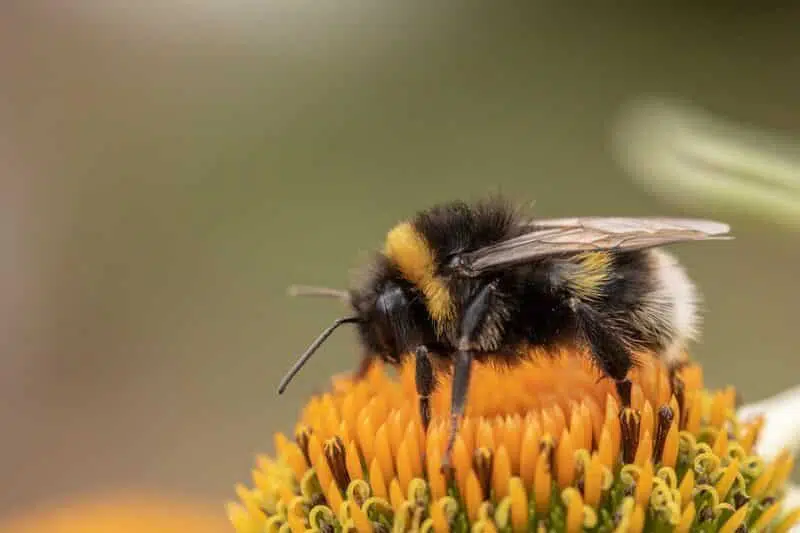Are you wondering about the intricacies of wildlife and animals in New Brunswick? New Brunswick is a Canadian province on the Atlantic coast along the northern Quebec Gaspé Peninsula and connected to Nova Scotia by the southeastern Isthmus of Chignecto, falling into a protected biozone. About 85% of New Brunswick is forests – 15,337,831 hectares.

There are 32 species,g: white pine, European red hair tree, oriental hemlock, white cedar, beech, red oak, black cherry, and white ash. Canadian lynx, black bear, white-tailed deer, bobcat, moose, raccoon, otter, red fox, coyote, musket, fisherman, mink, snowshoe hare, beaver, porcupine, chipmunk, and squirrels are the mammals which are included in this ecozone.
The mountainous region of New Brunswick includes the Notre Dame Mountain Range located on the Provincial Panhandle, which forms part of the northern border of the Appalachian Mountains. Coastal habitats include beaches, dunes, muddy areas, seagrass and kelp beds, barren islands, and salt marshes. These are important for wildlife and protection it from storms, floods, and erosion.
Click below to jump to any section on animals in New Brunswick:
American Toad
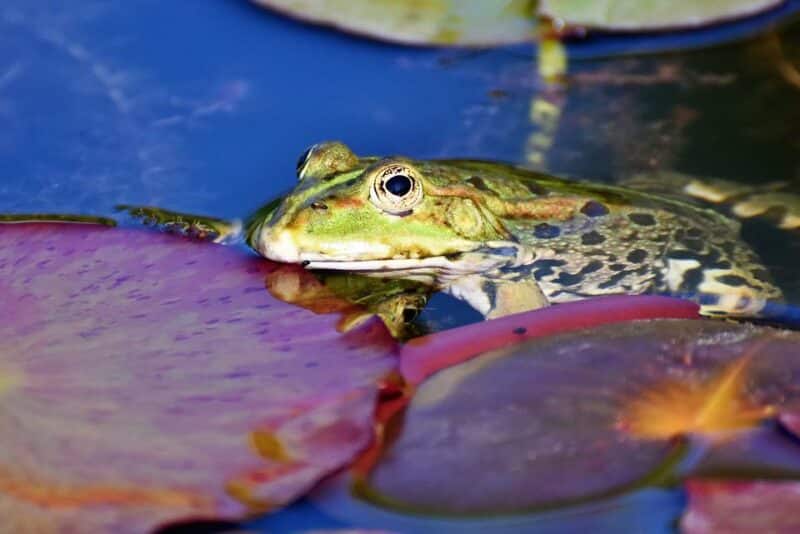
The American toad is found in all parts of North America. American toads are not usually found in the southern hemisphere but can be found in the northern hemisphere. These toads can adapt to their environment with a permanent water source and use water during the breeding season.
American toads require dense greenery, coverings, and hunting areas, and can live almost everywhere but must have clean water and food availability.
American toads are commonly found in orchards and fields. During the day, they find shelter under a canopy, on flat stones, planks, piles of wood, logs, under the road, or some other hiding area.
During the winter season or colder time, the frogs can move back to their summer homes or can find some other place to sleep. Female American toad lay their eggs in freshwater, and egg hatching starts 3 to 12 days after laying. The hatching of eggs also depends on the temperature of the water.
The tadpoles come together and eat and grow further for 40 to 70 days. When the tadpoles get hatched, they have pores just behind their mouth on the sides of their head. In the first 20 days, the tadpoles develop their hind legs. The legs of tadpoles grow continuously but very slowly. The front legs get covered with a layer of skin and appear after 30 to 40 days. When the front legs appear, the pores of tadpoles disappear.
After this, the tadpoles start to breathe in the atmosphere. American toads complete their flexibility, regrowth,h, and strengthen their legs in the last two to three days of the growth. After this, they stop eating plants. The newly born frog stays nearby to the lake for a few days or longer when the weather is dry. After this, they disperse and live mainly on the earth’s surface.
American toads continue to grow until and unless they reach the total size of 75 millimeters. When American frogs grow up, they shed their skin every week, and older American toads lose their skin four times a year. The skin gets peeled off in a single piece and is collected under the tongue area from where it is swallowed.
Where can one find American Toad in New Brunswick?
American frogs can live almost anywhere, from forests to backyards. They are common in fields and orchards.
American Bullfrog
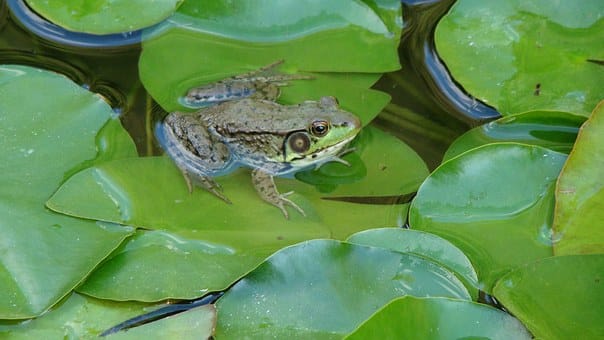
Frogs will feed on various lakes, ponds, reservoirs, irrigation canals, and wetlands, but there are essential aspects of human support. Permanent watering is needed because bullfrog tadpoles usually take at least 12 and 48 months to achieve natural regeneration; ponds or seasonal ponds, although functional as mobile frogs stations, will not allow for successful breeding.
Water temperature is also crucial because frogs breed only in warm water when summer temperatures exceed 25 degrees Celsius. For this reason, ponds and ponds are not too deep (6 meters) and have good sun in a secluded area, providing an ideal habitat for breeding frogs.
Coastal sediments and the abundance of aquatic plants and plants that, although unimportant, are often associated with many thriving frogs because they provide coverage and possibly a habitat for various predators.
Bullfrog tadpoles usually feed on aquatic plants or on organic matter, organic debris, algae, plant tissues, and small invertebrates. After the evolutionary process, frogs eat meat and any animal (invertebrate) that can be captured and swallowed (including tadpoles and their offspring).
In the highlands, frogs are more common in winter in the water, resting in the tropics at the bottom of ponds and ponds where they live until the temperature rises again in the spring. Bullfrogs can not tolerate frost but can withstand temperatures close to freezing.
Adults get torpid in the fall before children and at high temperatures, and young children also appear earlier in the spring and at lower temperatures than adults. Bullfrogs can withstand extreme winter temperatures in humid climates and must be able as long as they can avoid cold temperatures.
In the northern tropics, the active season for adults can be as short as five months, but in the tropics and tropics, frogs remain active throughout the year. In northern nations, there is a period of delay after the onset of spring before frogs breed, usually corresponding to a rise in water temperatures to 25 ° Celsius and above. The breeding season begins with mature men finding a place to defend themselves and declaring this with their voices.
Where can one find an American bullfrog in New Brunswick?
American bullfrogs can be found in ponds, reservoirs, lakes, irrigation canals, and wetlands alongside other animals in New Brunswick.
Red-backed Salamander
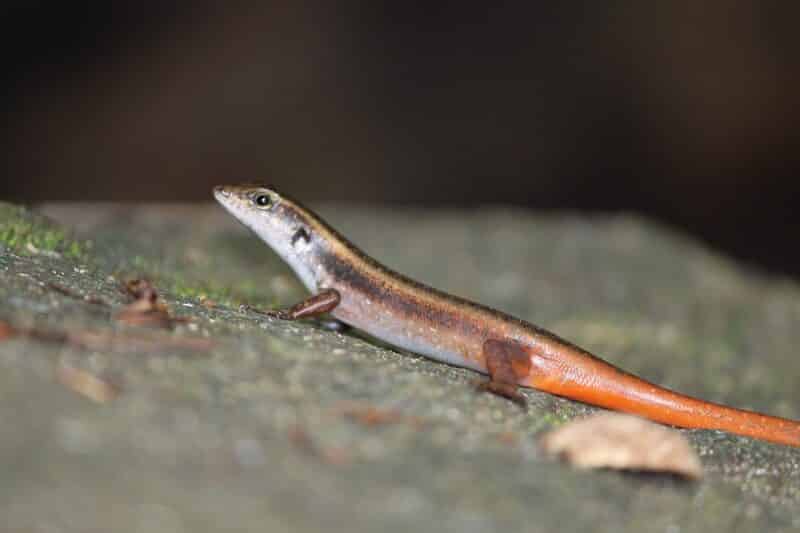
Red-backed Salamanders have two different color categories red back and lead back. As the name suggests, the red-back salamander has markings of Orange to red lines, while the lead-back salamander is grayish to black.
Both salamanders are differentiated with white and blackish underparts and five toes on hind legs. Red-backed salamanders have the capability of dropping their tail when they get attacked. The bottom will grow later, but the new seat will be dull or light in color. Red-backed salamanders do not have lungs, so they need to stay in wet and humid areas to breathe.
Red-backed salamanders are reptilian animals in New Brunswick, living under logs, leaf litter, and burrows of dense forests. While during the winter or colder season, this red-backed salamander dives under the ice.
Red-backed salamander has a very low tolerance to acidic soils, so they cannot survive in areas having very high acidity. Red-backed salamanders feed on various invertebrates, including worms, snails, arachnids, and insects.
As they love to live in humid areas, their diet varies with the seasons, and their diet increases in the wet season and significantly less in the dry season. Red-backed salamanders find a mixture of fruit flies, crickets, bean beetles, isopods, springtails, and black caterpillars.
Female red-backed salamander lay their eggs in dark and damp places between the cracks found in logs and under rocks. There is no class of aquatic worms of red-backed salamanders like other species of amphibians.
Where can one find Red-blacked Salamander in New Brunswick?
They are abundantl in deciduous forests, and in caves, decaying logs, and rocks.
Spring Pepper
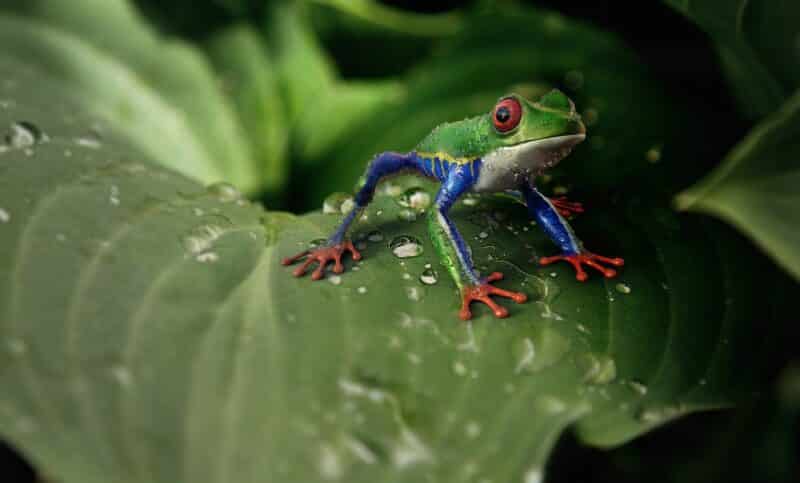
Spring peepers are tiny tree frogs. Bodies of spring peepers have smooth skin found to be brown, red, gray, or green with stripes of X-shape on their backs. Bellies of spring peppers are creamy to white.
Spring peepers have black stripes on their legs and a black line between their eyes. Their appearance allows them to blend in with tree bark, and they have a unique ability to match their color with surroundings like lighter or darker. They can climb mountains but love to spend their time on the ground. Furthermore, spring peppers hide below the leaf litter during the daytime.
These tiny animals in New Brunswick can be easily heard during their breeding period. Spring peppers are usually one inch long, like a piece of paper, and weigh 0.11 to 0.18 ounces. They live in forests, fields, wetlands, and grassy areas near lakes and swamps.
Spring peppers prefer to sleep in soft muddy areas near ponds during the winter and also under logs, in holes or crevices of trees. Animals that feed on spring peppers are salamanders, giant carnivorous insects, raptors, snakes, and other birds. Salamander larvae and invertebrates eat tadpoles of spring peppers.
Where can one find Spring pepper in New Brunswick?
They live in fields, grassy lowlands, wetlands, and wooded areas with other animals in New Brunswick. Their hibernation occurs in holes or loose bark in trees and under logs.
Orange Belted Bumblebee
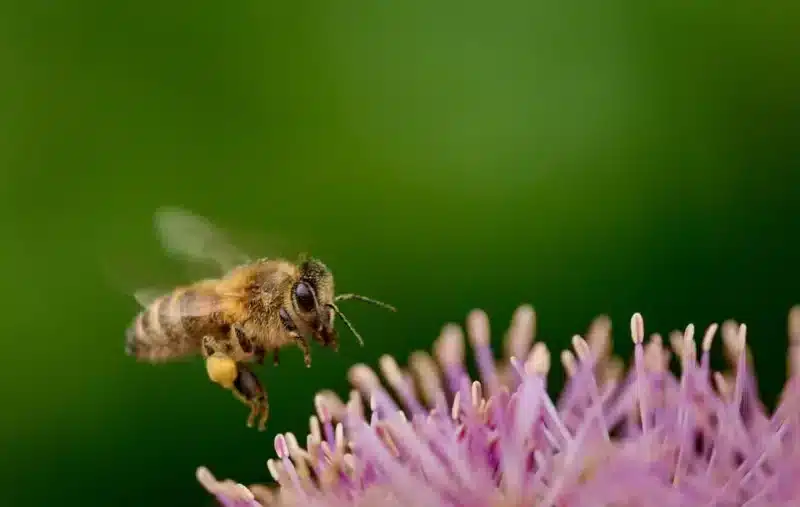
The queen and the crew have blackheads with a few blonde hairs. The anterior and posterior thorax and the first and fourth abdomen are yellow, the 2nd and 3rd abdominal segments are orange, and the rear parts are black. The queen and the staff are equally close, and the most striking difference between them is the size of their fat.
Workers have very little fat, especially in the stomach, which leaves a large area of belly juice, enlarging the esophagus where nectar can be stored in the food search. In contrast, in young females, the stomach is full of fat, resulting in queens being more difficult in size than workers.
The queen bees and the bees can sting. Unlike bee stings, bumblebee stings do not have barbs like harpoons at the end of the string so that bumblebees can repeatedly bite without the risk of death. Bumblebee is seldom aggressive but will attack to protect their nest or when threatened or annoyed.
Bumblebees, along with other members of the” Bombus” genus, live in eusocial colonies where individual members of the group act as one of the organisms of many species. Eusociality may have originated from the ancestor of the bumblebee because the offspring that live in the nest as adults help raise their mother’s chicks.
Hamilton’s combined merit theory can explain the emergence of eusociality. The most barren workers seek food and care for the colony’s needs, while the queen is responsible for reproducing and creating new generations of workers. Toward the end of the group’s life cycle, workers compete with the queen, eat her eggs, and lay them.
Workers are not entirely barren, despite being unable to get married, as they have ovaries. Workers’ eggs always grow into males. The queen often retaliates by harassing the workers and trying to eat the workers’ eggs. However, the queen’s vengeance sometimes shows sufficient infiltration, and cruel reproductive workers kill her.
Where can one find an Orange belted bumblebee in New Brunswick?
They live in small cavities like old and unused mouse nests or under large patches of grass.
Summary of Animals in New Brunswick
New Brunswick has a variety of animals living in different habitats. If you found this blog about animals in New Brunswick interesting, check out animals in Wisconsin and Washington next!
- Animals and Wildlife in Colorado - April 24, 2024
- Best Places to see Sloths - April 24, 2024
- Where to See Alligators in the Wild - April 24, 2024

